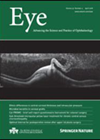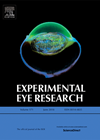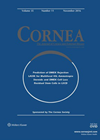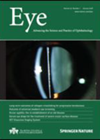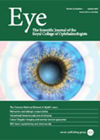
Journal Reviews
Corneal thickness in patients with diabetic peripheral neuropathy
This cross-sectional study assessed corneal thickness in association with diabetic peripheral neuropathy (DPN) severity. The study also tried to identify the layer of the cornea most affected by DPN status. Performed at the University of Michigan the study included three...
Microbial keratitis in corneal grafts
The authors report a retrospective case series of 59 episodes of microbial keratitis identified in 41 eyes of 41 patients (39 penetrating keratoplasty (PKPs) and two deep anterior lamellar keratoplasty (DALKs)), from a total of 759 consecutive corneal grafts identified...
Long-term corneal crosslinking results in paediatric eyes
This prospective longitudinal study examined patients 18 years of age or less with progressive keratoconus, who underwent corneal crosslinking and completed 10 years of follow-up. Crosslinking protocol involved removal of epithelium, 10 minutes of riboflavin soaking, followed by 30 minutes...
Phakic iris clip lenses and endothelial cell loss
This retrospective observational study included long-term results on endothelial cell losses in highly myopic eyes, which underwent phakic iris-clip lens implantations. Included in the analysis were 113 eyes with mean preoperative spherical equivalent (SEQ) of -14.67 +/- 5.15 Diopters (D)....
MicroRNA inhibits corneal neovascularisation
MicroRNAs (miR) are small non-coding RNA that target mRNA for destruction. MiR target about 30% of the protein coding genes and fine tune their expression. MiR have been shown to be involved in several cellular processes including cell cycle, tissue...
Corneal stroma modelling under hypoxic conditions
The cornea is exposed to hypoxia under several conditions including sleep, inflammation and wound healing. Being an avascular tissue to maintain transparency, how the cornea homeostatic controls oxygen tension is important. To address this process two models were utilised; a...
Outcomes of hemi DMEK
This was a prospective, interventional case series of 10 eyes from 10 patients who underwent hemi-descemet membrane endothelial keratoplasty (hemi-DMEK) for Fuchs endothelial dystrophy. The surgical technique for hemi DMEK procedure was similar to the circular DMEK except that a...
Effect of rebubbling after DMEK
This study objectively evaluated the impact of rebubbling on postoperative corneal clarity and endothelial cell loss (ELD) after DMEK. This was a retrospective analysis of 132 consecutive DMEK cases performed for Fuchs endothelial dystrophy or pseudophakic bullous keratopathy. Patients were...
Descemetorhexis without endothelial keratoplasty
This retrospective study examined outcomes of the largest reported series of eyes, which underwent Descemetorhexis without endothelial keratoplasty (DWEK) for Fuch’s endothelial dystrophy with mean 10 months of follow-up. Seventeen eyes were included in analysis; with 82.4% achieving corneal clearance...
EDTA chelation for band keratopathy
The authors describe a retrospective analysis of 89 eyes from 72 patients who underwent ethlenediamine tetra-acetic acid (EDTA) chelation for band keratopathy. The ratio of R:L eye was 41:48. The mean age was 71 years (range 18-93 years). Thirty-two out...
Tacrolimus for endothelial rejection
This double-blinded randomised controlled trial tested the use of adjuvant topical Tacrolimus drops in cases of acute endothelial rejection in penetrating keratoplasty (PK). Patients with typical signs of endothelial rejection were randomised to receive either steroid therapy with topical Tacrolimus...
Emergency eye care in the UK: the way forward?
In this paper the authors highlight issues pertaining to the growing number of patients presenting to the emergency eye services in the UK. Data collection involved literature review, telephone surveys and email correspondence (n=142). Ninety-one lead clinicians responded and a...


